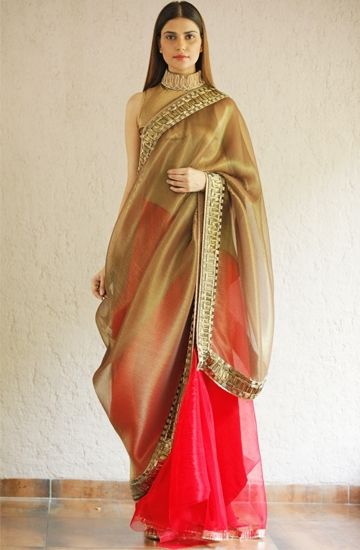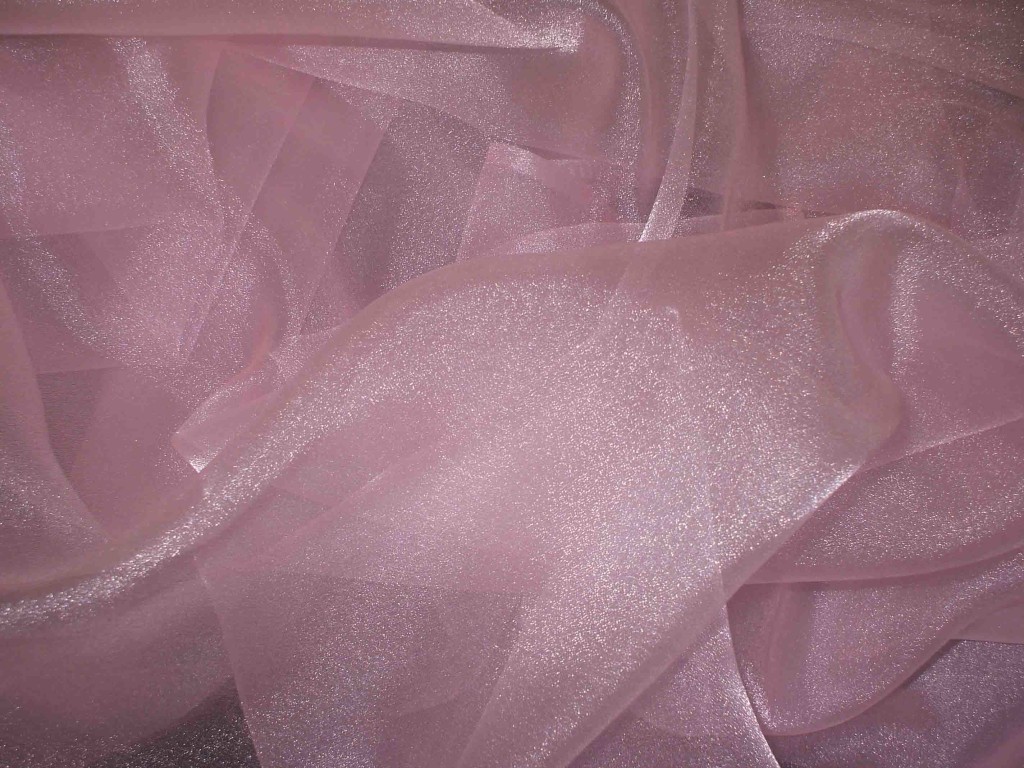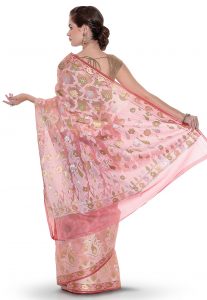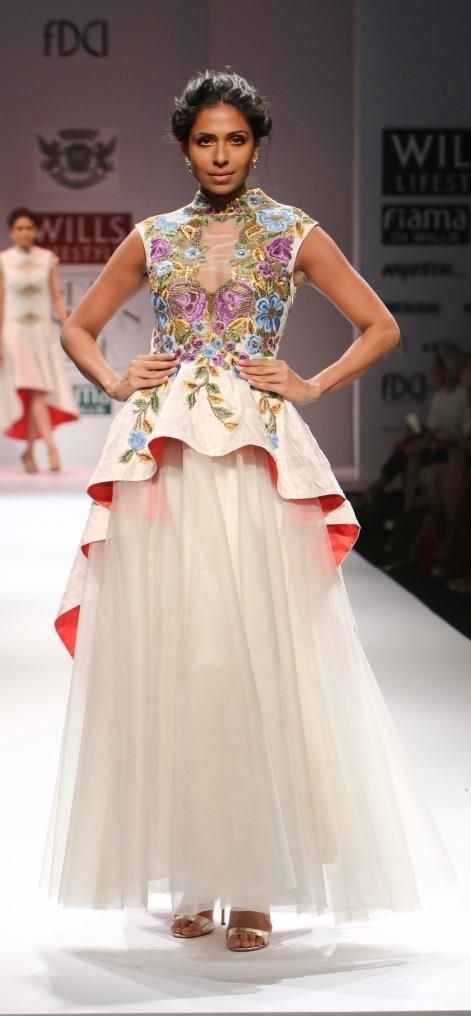
Organza Fabric
Organza is a light sheer fabric that was originally made from silk. The modernized version of the fabric however, can be created not only with silk but also polyester or nylon, or even a blend of the three. While the look and feel is similar to silk, it is a lot thinner and is made of a plain weave. Organza is also known for being a lightweight material as well as being a crisp and stiff fabric, making it ideal for evening wear, wedding gowns, costumes and underskirts. Besides fashion, organza also finds use in home décor and interior designing.
History and Evolution of the Fabric
Organza has been derived from another material that was known as Organzine, which was made from strong fibers of silk that were twisted into strands. The word Organza came first into use during the Middle Ages and was first integrated into the French and Italian languages as the words organsin and organzano, respectively. This was named after the town of Urgang in Turkestan which has one of the most famous silk markets at the time where this fabric was sold.
Although it was originally made of silk, the need for creating a fabric with greater tensile strength but the same gossamer look resulted in the use of nylon and polyester threads, either completely or partially in the creation. Nowadays, different appeals can be created by modifying the weave of the filaments.
(Also Read: Lehenga Style Saree)
Sources of Inspiration
The need for creating a sheer fabric in silk arose out of the need of upping fashion trends and improving home décor at the time. Sheer fabrics were required for trimming on lampshades as well as for the creation of outer layers on heavy evening garments. Till date, the underlying principle of the use of Organza remains the same while the uses have diversified beyond imagination.
The Making
Traditionally made from yarn, Organza is created by tightly twisting separate yarns and then weaving them to provide texture and sheen to the material. The yarn is first combed and then treated with acid to add crispness. Even though the material is stiffer than most, it isn’t rough and doesn’t fray easily.
In order to create a garment from organza, either fully or partially, there are certain defining factors such as seam appearance, seam pucker and seam stiffness that need to be incorporated. These can easily be altered by using different pressing machines (like metal or plastic) and the weight of the fabric.
Majorly, the manufacturing of the organza fabric is concentrated in China, France, Italy, United States and Bangalore in India. While China exclusively manufactures silk Organza, the other key producers manufacture Organza blends with either synthetic fabrics or even natural fibers like cotton.
Style and Variety
There are many varieties within the Organza fabric, depending upon colors, texture and appearance of the material.
- Traditional Organza, also known as Pure Organza or Silk Organza, is produced primarily in China. It is named as such because the filaments in the yarn are pure silk and not blends of any sort.
- Broadly however, modern day production of Organza can be categorized as semi-synthetic or fully synthetic. Semi synthetic Organza is created with a blend of silk and nylon or polyester. Fully synthetic Organza on the other hand is made purely of synthetic fibers of either nylon or polyester. The production of both these synthetic varieties is cheaper than pure Organza or silk organza, and is also more affordable at the time of purchase. They are also more durable than Silk Organza.
- Other variations in Organza are based on the weave and the consequent visual effect they provide to the fabric. For instance, loose weaves result in translucent, sheer-looking textile.
- Organza can also be differentiated on the basis of its usage. Silk Organza is popularly used in the creation of bridal wear. It is used to embellish the gown by adding frills and laces. It is usually placed as the outer-most layers on the gown or skirt with a more solid textile as the under-layers as the translucence of Organza is perfect for the overall vibe of a wedding.
- Organza is also used in home décor, for instance as frills for lampshades and other such household items. They are also used to make pouches in which one can hold rings and other knick-knacks that can be given to wedding guests or on festive occasions.
- Commonly, there are about ten different types of organza that are sold in the market and most of these are based on their colors/shades and luster. These are classic organza, spark organza, double-dye organza, crystal organza, dull organza, bright organza, mirror organza and pearl organza.
Present Day Scenario and Global Influence
Organza as a fabric is so light and airy that it is ideal for bridal wear. It is popularly used in the creation of wedding and party-wear lehengas. Custom tailoring of bridal lehengas is the best option when looking at using this fabric.
(Also Read: Soft Crush Fabric)
Wearing the Attire
Organza, as mentioned above, is stiff and is used for layering of the gown or the skirt, therefore adding volume to the lower body. It is often used for making flared skirts in multiple layers; layered lehengas are a perfect example of the use of Organza in bridal wear and wedding wear.
Since organza in itself is so light and gives an ethereal appearance to the wearer, it can be accessorized with jewelry in precious metals and precious stones. Diamonds and platinum are especially ideal for the kind of exquisite garments that use organza prominently.
Maintenance
As the fabric is so fine and thin, it can snag very easily. Therefore, it is essential to make very careful, measured movements when wearing the fabric. When in the closet, it should be wrapped in muslin along with moth balls, to protect from insect-damage. Although the individual filaments are strong (at least in the semi and fully synthetic varieties), it should be hand washed in gentle suds as the material itself is very thin, especially if it is silk organza. Even though the fabric is stiff, it can easily be washed and pressed.
Facts and Trivia
- Italian and French Organza are usually made from silk-nylon blends that are known for being extremely sturdy.
- USA and India’s Organza is a mix of silk, polyester, and nylon so as to make the production process cost-effective while retaining the smooth texture of silk organza.
- Organza is commonly confused with satin, organdy, and taffeta; all of which are individual materials in their own right.
- There is no restriction on the silhouette of skirts that can be crafted out of organza, even if it is made of silk. It is airy and flowing like other modern fabrics such as chiffon and georgette.
- Although organza can easily be dyed, designers prefer to use it in its natural white color.
References
Categories: Textiles



